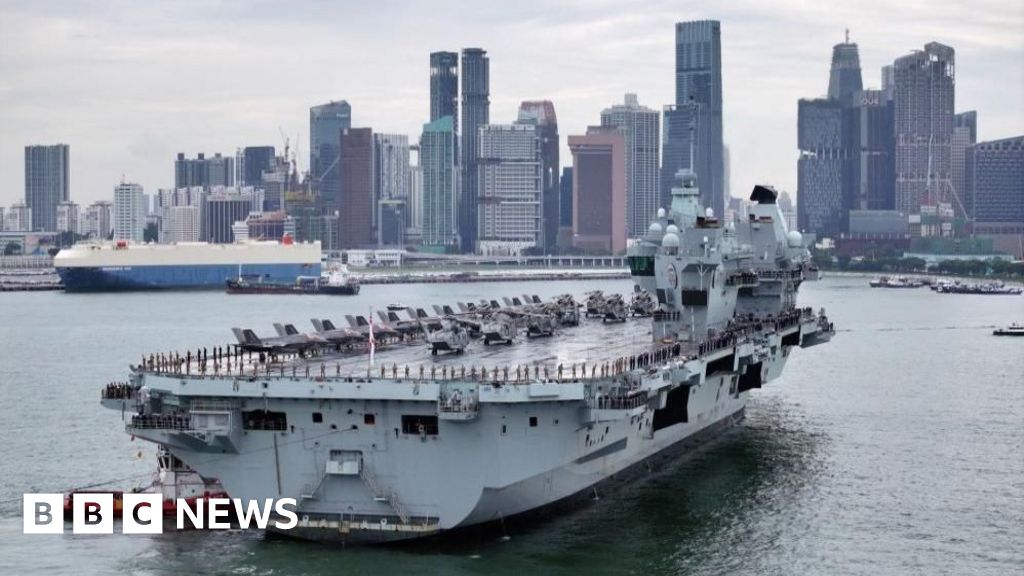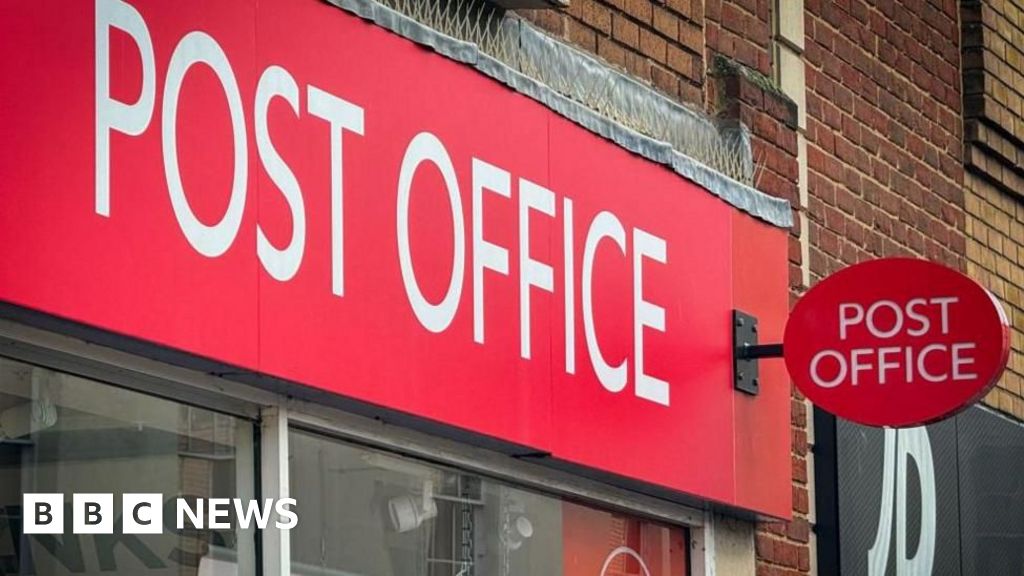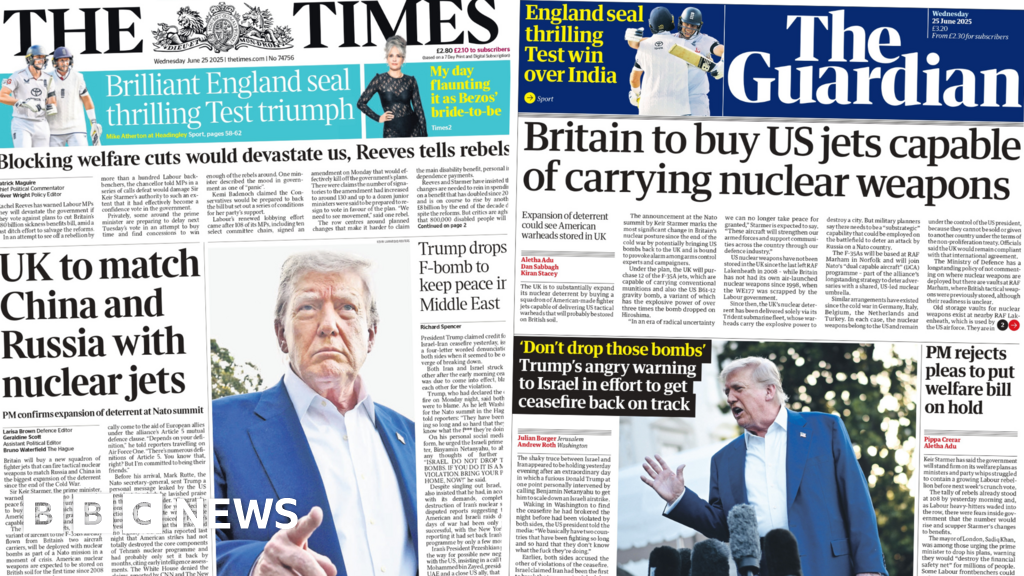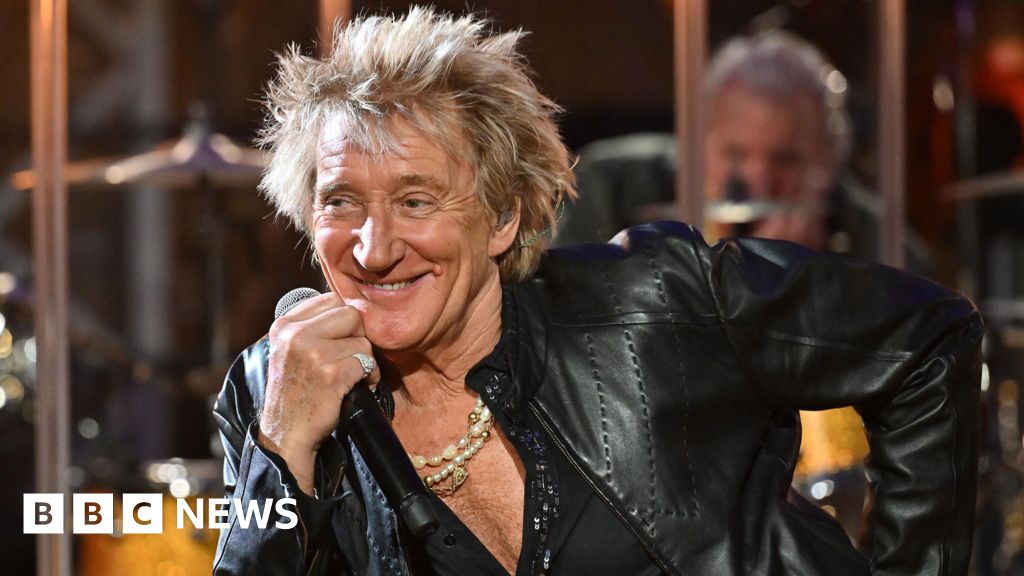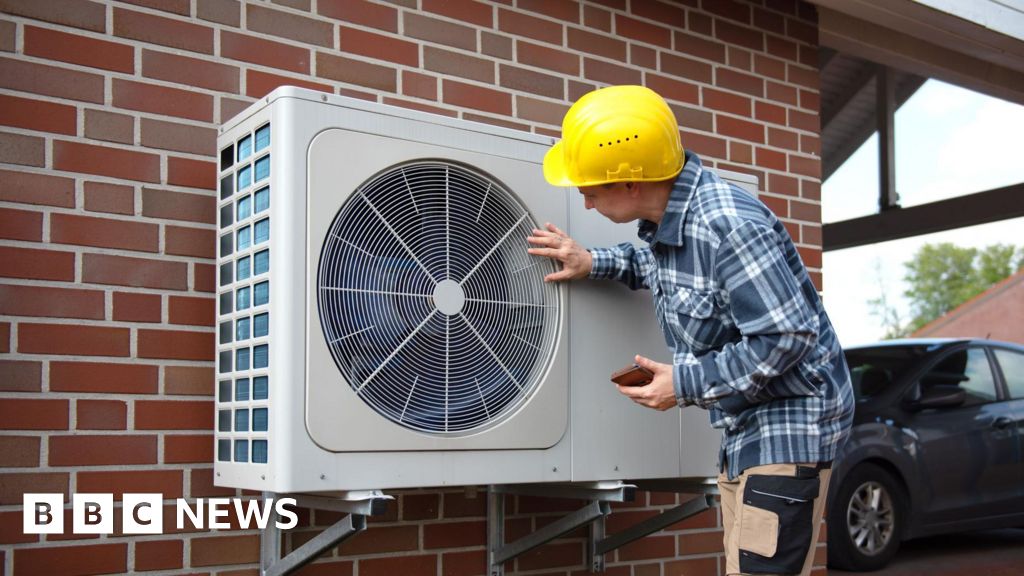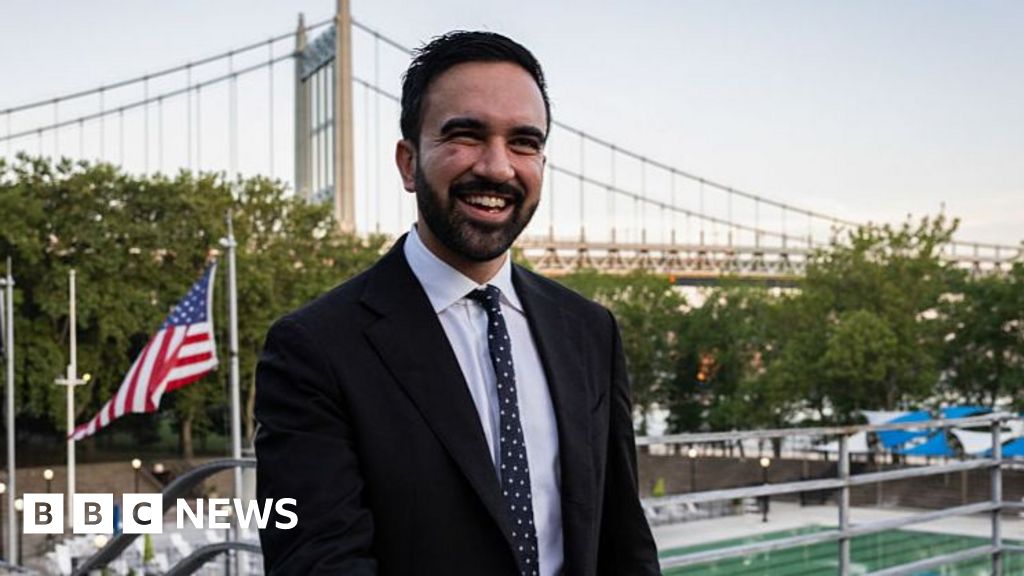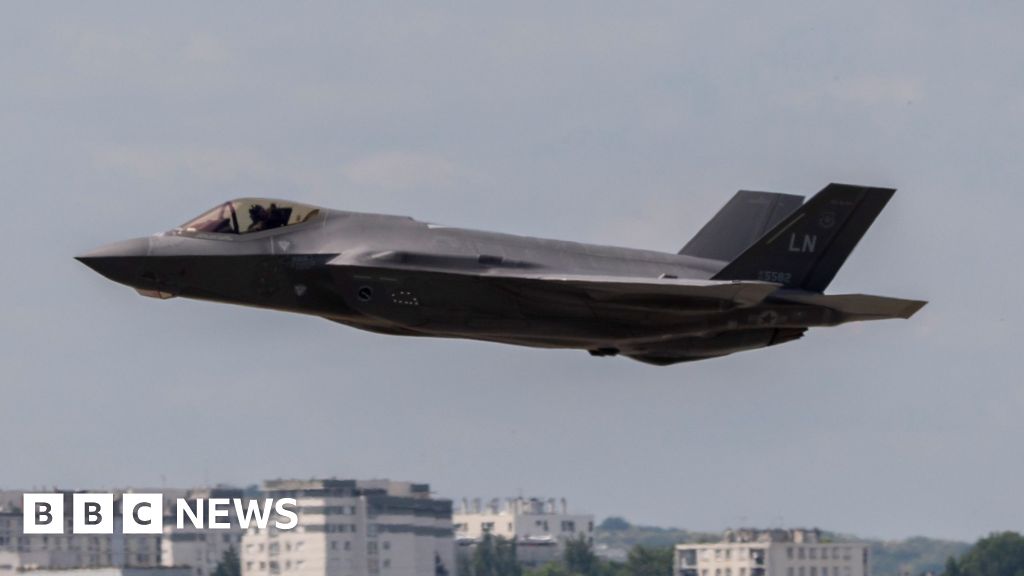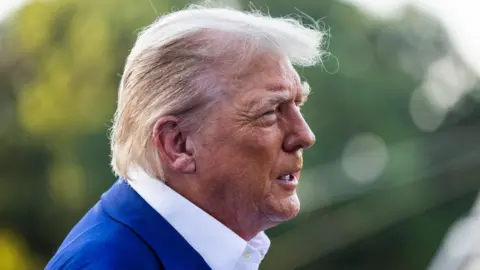 EPA
EPASince 13 June, Israel has inflicted widespread damage on Iran's military infrastructure, Iranian missiles have pierced Israel's defence systems and the US has conducted strikes against Tehran's nuclear programme.
Then, over the course of a dizzying 24 hours beginning on Monday, events moved even faster: a US air base came under attack, the White House mediated a ceasefire between Iran and Israel, and that deal came close to unravelling.
This is how that volatile day unfolded.
'Shelter in place'
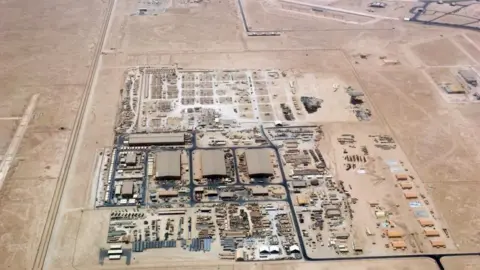 USAF
USAFThe al-Udeid US military base in Qatar, pictured in 2004
07:00 Washington DC / 12:00 London / 14:00 Tel Aviv / 14:30 Tehran
The first signs that the conflict gripping the Middle East was about to spread to the Gulf was a calmly worded warning to US citizens in Qatar.
"Shelter in place" was the recommendation from the US government - with an attached reassurance that this was "out of an abundance of caution".
The UK issued similar advice shortly after.
It was always feasible Iran would strike back at America in Qatar. The country is home to the al-Udeid military base, a sprawling installation outside the capital, Doha, which houses thousands of troops and is where US air operations in the Middle East are orchestrated.
Leaders in Tehran had threatened retaliation for unprecedented US strikes over the weekend against three nuclear facilities in Iran, including its prized Fordo enrichment site, buried deep below a mountain.
From the bunker where he has reportedly been sheltering since Israel launched its military operation against Iran, it seemed Supreme Leader Ayatollah Ali Khamenei had issued an order: to hit back against the US at one of its most strategically important assets in the region.
'Credible threat'
12:00 Washington DC / 17:00 London / 19:00 Tel Aviv / 19:30 Tehran
The airspace above Qatar is closed, its government announced.
Air traffic controllers in Doha hurriedly started turning passenger planes back, and flights bound for one of the world's busiest airports began to land elsewhere in the Gulf.
The BBC then learned of a "credible threat" from an Iranian missile attack against the al-Udeid air base.
Unnamed US officials briefed American media that missile launchers had been sighted pointing in the direction of Qatar.
US Defence Secretary Pete Hegseth and his most senior general headed for the White House to monitor the situation.
Within the hour, explosions were heard over Doha and the sky above its lavish skyscrapers was streaked with trails left behind by air defence missiles as they hunted down Iranian weapons in the air.
'Not strength but vulnerabilities'
Video shows air defences over Qatar as Iran attacks US base
13:00 Washington DC / 18:00 London / 20:00 Tel Aviv / 20:30 Tehran
Iran's state-controlled media began to report its retaliation was under way. Shortly after, the Iran's revolutionary guards confirmed as much.
"US bases in the region are not strengths but vulnerabilities," it said - but the attack was over soon after.
Qatar reacted before the US. Though the target was the US base on its soil, its sovereignty had been violated by "brazen aggression", a furious government statement read.
But crucially, it confirmed the missiles had been intercepted. The base had been evacuated before the attack began and no one had been killed or injured.
At around the same time, an inflammatory illustration appeared on the supreme leader's X account, depicting missiles reigning down on a US military base as a tattered American flag burned.
However, rather than heralding any destruction, he wrote: "We didn't harm anyone."
It was beginning to appear that the US and Qatar had known about the planned Iranian attack in advance.
To outside analysts, it looked as though it had been designed to allow Iran's leaders to save face but avoid escalation.
They could tell their public they had retaliated against the Americans - but they did so without inflicting the sort of loss that would risk dragging it into a direct war against a far more powerful adversary.
A de-escalation was in sight - and the world waited for the president of the United States to log on to social media.
'Time for peace'
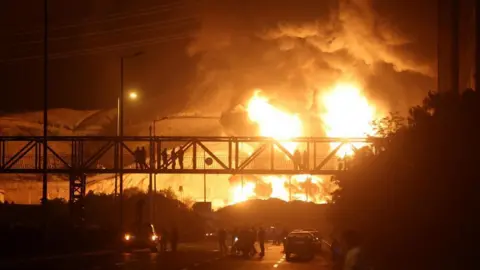 Reuters
ReutersIsrael has struck military, security and energy targets throughout Iran, including the Sharan oil depot near Tehran on 15 June
16:00 Washington DC / 21:00 London / 23:00 Tel Aviv / 23:30 Tehran
"Weak." "Expected." "Effectively countered."
That was how Donald Trump described Iran's attack - but as his message continued, the tone was more conciliatory.
The president thanked Iran "for giving us early notice" and said they had "gotten it all out of their 'system'."
He went on: "Perhaps Iran can now proceed to Peace and Harmony in the Region, and I will enthusiastically encourage Israel to do the same."
Two hours earlier, Iran had attacked a US air base. Two days earlier, Trump had ordered unprecedented strikes against Iran, a country he has deemed evil and a mortal danger to the world in the past.
Now he was offering its leaders an olive branch.
Concluding a series of posts which sent observers into a tailspin, he wrote: "CONGRATULATIONS WORLD, IT'S TIME FOR PEACE!"
'The 12 Day War'
 Maxar
MaxarThe White House pushed for an agreement to end the conflict after striking the Fordo nuclear site overnight on Saturday
18:00 Washington DC / 23:00 London / 01:00 Tel Aviv / 01:30 Tehran
It has since emerged that frantic talks were under way behind the scenes involving the US, Iran, Israel and Qatar.
Donald Trump spoke directly to Israeli Prime Minister Benjamin Netanyahu, a close ally whose war on Iran the president had briefly joined. The call took place in private but the message was apparent: it was time to end the fighting.
Meanwhile, Trump's deputy JD Vance and his chief international negotiator Steve Witkoff were reaching out to the Iranians directly and via diplomatic backchannels.
From Washington, Trump's team was attempting to hastily piece together something prized above all else by the US president, but which has proven so elusive in the Middle East: a deal.
Reports of success and competing denials began to swirl - but slowly and surely, momentum appeared to build as reports of progress emerged.
Then, just after 11:00 BST, the president took to social media again. His message to began: "CONGRATULATIONS TO EVERYONE".
A complete and total ceasefire had been agreed between Iran and Israel, the president wrote. There would be a grace period for "in progress, final missions", and it would come into force six hours later.
The conflict should henceforth be known as "the 12 Day War", Trump wrote.
Six thousands miles away in the Middle East, another day was dawning.
'Last round of missiles'
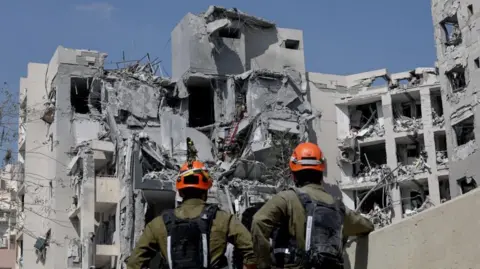 EPA
EPAA residential building was destroyed in Beersheba in Israel on Tuesday morning
22:00 Washington DC / 03:00 London / 05:00 Tel Aviv / 05:30 Tehran
Across Israel, sirens began to sound and people were ordered to shelters: Iranian missiles were incoming, the Israel Defense Forces warned.
Across a period of less than 60 minutes, Israel said Iran had launched three waves of missiles. Several more would follow as the morning wore on, the Israeli military said.
In Beersheba, there was a direct hit on a multi-storey residential building. Four people - at least three of whom were hiding in a safe room - were killed when a missile tore through it.
Israel's prime minister accused Iran of deploying one of the largest missiles in its arsenal against the homes.
At the same time, Iranian media reported it had sustained heavy strikes by Israel overnight, killing nine in the northern town of Astaneh-ye Ashrafiyeh. Mohammad Reza Seddiqi Saberi, a nuclear scientist, was reportedly among them.
The region's deputy governor said four apartments "were completely destroyed, and many surrounding houses were damaged due to the explosion". Pictures from the scene showed debris scattered across a street surrounded by houses.
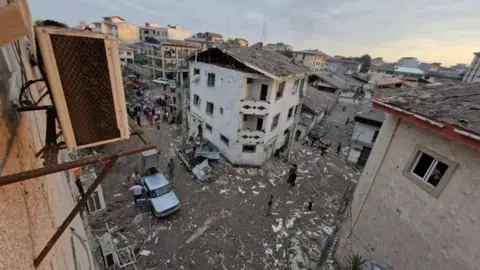 BBC Persian
BBC PersianThe scene in northern Iran after an Israeli missile strike
Iran accused Israel of firing "a last round of missiles" to beat the ceasefire deadline.
The Israeli military later confirmed it had carried out operations overnight, while the Iraqi government claimed drones had targeted bases on its territory. Pro-Iranian armed militias operate in Iraq but it is not clear what was targeted.
What was clear was that the fighting was continuing until the very last moment.
'Ceasefire is now in effect'
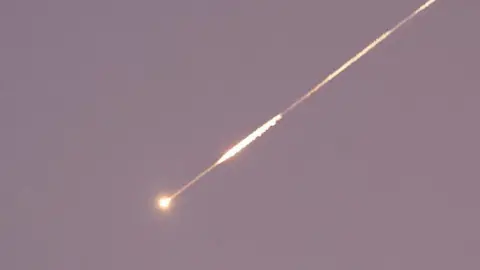 Reuters
ReutersMissiles launched towards Israel were pictured overnight on Monday
01:00 Washington DC / 06:00 London / 08:00 Tel Aviv / 08:30 Tehran
Trump declared the beginning of the ceasefire in a social media post, writing: "THE CEASEFIRE IS NOW IN EFFECT. PLEASE DO NOT VIOLATE IT!"
Shortly after, the Israeli government formally accepted the ceasefire arrangements.
A statement said Israel had achieved its war objectives of eliminating Iran's nuclear and ballistic missile capabilities, and had taken its place among "world powers" as a result.
Iran's foreign minister Seyed Abbas Araghchi had already indicated overnight that Tehran was open to the ceasefire put forward by Trump. He said that if Israel stopped its attacks before 04:00 local time, then "we have no intention to continue our response afterwards".
But it would not take long until it looked as though that ceasefire was in peril.
Air defences were activated when a missile was launched from Iran, the Israeli military said.
Iran issued denials, but Israel's defence minister said he had ordered "intense strikes against regime targets in the heart of Tehran", while Bezalel Smotrich - a far-right government minister - warned: "Tehran will shake."
It looked as thought Trump's rapidly assembled deal might be unravelling a couple of hours after it came into force.
With Israeli jets on their way to the Iranian capital, Trump posted again: "DO NOT DROP THOSE BOMBS. IF YOU DO IT IS A MAJOR VIOLATION. BRING YOUR PILOTS HOME, NOW!"
'These guys got to calm down'
 EPA
EPA07:00 Washington DC / 12:00 London / 14:00 Tel Aviv / 14:30 Tehran
As morning broke in Washington DC, the US president stepped onto the White House lawn, where a helicopter was waiting to take him to a Nato summit.
Reporters were also waiting, eager to hear what he had to say after a dizzying night of announcements, claims and denials.
Both Israel and Iran had violated the ceasefire, Trump told them - but he insisted the deal was still in place.
Referencing the Israeli jets he had urged Netanyahu to turn back, he said: "There was one [Iranian] rocket that I guess was fired overboard after the time limit and now Israel is going out. These guys [have] got to calm down."
Trump said the Iranian missile was fired "perhaps by mistake" and "didn't land".
The president appeared angry. He said he was "not happy with Israel" for launching strikes "the likes of which I've never seen before" just as the deal was agreed.
"I'm not happy with Iran either," he added.
As Trump turned to walk away, he vented his frustration with Israel and Iran, using an expletive as he said they had been fighting so long that they don't know what they're doing.
The helicopter took him to a military base in Maryland, where he was to board Air Force One and fly to the Netherlands for the summit.
Once in the air, he called Netanyahu, a conversation which appears to have been a tense one.
A White House source told CBS News, the BBC's US partner, that the president was "exceptionally firm and direct" with the Israeli prime minister. Netanyahu "understood the severity of the situation and the concerns President Trump expressed".
Trump reportedly confirmed to reporters on board that he had told Netanyahu to bring back the military aircraft, which he indicated were on the verge of attacking Iran.
As for leaders in Tehran, Trump said that developing a nuclear weapon would be the "last thing" on their minds.


